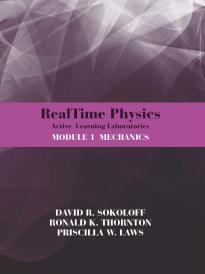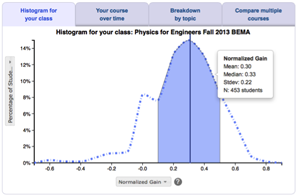
RealTime Physics
Developed by: David Sokoloff, Ron Thornton, and Priscilla Laws
Level










middle schoolhigh schoolintro collegeinter-mediateupper levelgrad school other

calc based

alg based


middle schoolhigh schoolintro collegeinter-mediateupper levelgrad school other

calc based

alg based
Topics








Setting






Overview
What? A series of introductory laboratory modules that use computer data acquisition tools to help students develop physics concepts and acquire lab skills. Students construct their own models of physical phenomena based on observations, experiments, mathematical modeling, data analysis, and simulations.
Student skills developed
Designed for:
- Conceptual understanding
- Lab skills
- Using multiple representations
Instructor effort required
- Low
Resources required
- Computers for students
- Advanced lab equipment
- Cost for students
- Tables for group work
Resources
Developer's website: RealTime Physics
Teaching Materials
Realtime Physics is available in a series of books published by Wiley:
- Module 1: Mechanics
- Module 2: Heat & Thermodynamics
- Module 3: Electricity & Magnetism
- Module 4: Light & Optics
In response to COVID-19, the developers of RealTime Physics have created a free Distance Learning RealTime Physics IOLab Mechanics active learning lab curriculum.
Research
RESEARCH VALIDATION
This is the third highest level of research validation, corresponding to:
- at least 1 of the "based on" categories
- at least 1 of the "demonstrated to improve" categories
- at least 1 of the "studied using" categories
Research Validation Summary
Based on Research Into:
- theories of how students learn
- student ideas about specific topics
Demonstrated to Improve:
- conceptual understanding
- problem-solving skills
- lab skills
- beliefs and attitudes
- attendance
- retention of students
- success of underrepresented groups
- performance in subsequent classes
Studied using:
- cycle of research and redevelopment
- student interviews
- classroom observations
- analysis of written work
- research at multiple institutions
- research by multiple groups
- peer-reviewed publication
References
- E. Bodegom, E. Jensen, and D. Sokoloff, Adapting RealTime Physics for Distance Learning with the IOLab, Phys. Teach. 57 (6), 382 (2019).
- P. Laws, M. Willis, and D. Sokoloff, Workshop Physics and Related Curricula: A 25-Year History of Collaborative Learning Enhanced by Computer Tools for Observation and Analysis, Phys. Teach. 53 (7), 401 (2015).
- M. Quezada-Espinoza, A. Dominguez, and G. Zavala, Using RealTime Physics with different instructional technologies in a circuits lab, presented at the Physics Education Research Conference 2016, Sacramento, CA, 2016.
- B. Royuk and D. Brooks, Cookbook procedures in MBL physics exercises, J. Sci. Educ. Tech. 12 (3), 317 (2003).
- M. Wittmann, On the Dissemination of Proven Curriculum Materials: RealTime Physics and Interactive Lecture Demonstrations, 2002.





